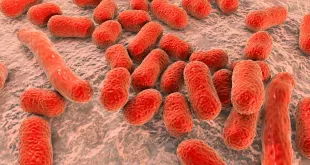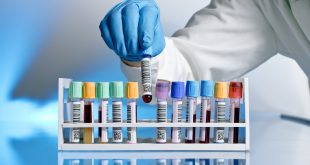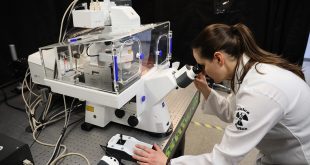By Hermione Wilson
Innovative Canadian researchers are advancing the young field of gene therapy
Progress is slow. Gene therapy treatments have only been approved for humans since the 1990s, says Ian Winship, Associate Professor in the Department of Psychiatry at Edmonton’s University of Alberta and head of the school’s Neurochemical Research Unit. It’s still “early days,” but after two decades, Winship’s PhD student, Anna Wiersma, and their colleagues may have struck upon a treatment that will make recovery from a stroke possible.
Three hours away, Aneal Khan and his colleagues at the University of Calgary recently conducted the world’s first human trial of a gene therapy treatment for Fabry disease, a rare condition caused by a variant in the GLA gene.
Gene therapy is defined by Health Canada as “an experimental approach to treating genetic disease where the faulty gene is fixed, replaced or supplemented with a health gene so that it can function normally.” In most current gene therapies, a virus is used as a delivery method, or vector, for the new gene, exploiting the virus’s natural ability to insert its genetic material into a human cell’s genome. Khan, an assistant professor in the Department of Medical Genetics at the University of Calgary and a practicing physician at Alberta Children’s Hospital, leads a group that is using a lentivirus as a delivery system. Lentiviruses are a type of virus with the ability to provide long-term and stable gene expression and to infect non-dividing cells.
The problem in Fabry disease is the dysfunction of the GLA gene. The gene’s primary function is to produce a protein that breaks down a complex fat known as GL3. In a person with Fabry disease, the GLA gene does not produce enough of the protein and the GL3 fat builds up in the person’s system, causing physical symptoms such as kidney disease, heart disease, and stroke. The only treatment is enzyme replacement, in which artificially manufactured protein is inserted into the patient every two weeks.
“If you were going to treat hunger that way, then you would have a big meal every two weeks, and I think one can see that’s really not how the body works,” Khan says. “The body normally would make the enzyme and it would be secreted in small amounts twenty-four-seven.”
Khan and his colleagues were not necessarily looking for a cure for Fabry disease; they started with the idea that there must be a better way to treat the condition, a more cost-effective and long-term solution to the problem of the GLA gene. They theorized that if they harvested stem cells from the patient, incubated those stem cells with the lentivirus, then put the stem cells back into the patient, “then we have this reservoir of cells that will live for the life of the patient and will make extra amounts of this protein,” Khan says.
In January 2017, Darren Bidulka was the first ever recipient of this experimental gene therapy. “For an inborn error of metabolism [disease] in Canada it’s the first gene therapy treatment,” Khan says. “For Fabry disease, it’s the first in the world.” He is circumspect about whether this will be a long-term solution to the disease, however.
“We’re trying to avoid the term ‘cure’ because, technically, a cure means you have eliminated all possibility of risk from the disease and we haven’t established that,” he says. “What it is, is a way to offer a long-term treatment, and of course we don’t know how long-term, and by doing so their quality of life would be similar to a person who didn’t have the disease.”
Still, it appears, more than a year later, that the cells of the two patients who received the experimental treatment are producing the enzyme needed to break down GL3 and it appears to be from the product the researchers injected.
Wiersma’s study, which was published last year in the Journal of Neuroscience, has not yet progressed to human trials. The experimental therapy piggybacks on work done in the area of spinal cord injuries a drug based on the enzyme chondroitinase ABC (ChABC) is used to interrupt the extracellular matrix of cells in the brain in order to encourage the rewiring of the brain and spinal cord.
“[The extracellular matrix] is important for maintaining stability in the adult brain. When your brain and spinal cord are functioning well, this matrix acts to keep things stable and keeps things functioning properly. But after an injury you actually want to ideally improve the brain and the spinal cord’s ability to rewire itself, to replace connections that are lost, and in that case this matrix acts to prevent that.”
The enzyme has been tested in spinal cord injury to look at ways to reduce the matrix and the scarring in the spinal cord in order to improve regeneration, Winship says. He and his colleagues thought that it might do the same thing for post-stroke recovery by increasing rewiring in that region of the spinal cord. In patients who have had a stroke, there is usually a period of recovery, Winship says. If they receive rehabilitative training immediately afterwards, but after a few months that recovery slows to a stop. The enzyme treatment may help.
Winship’s lab took rats and induced a stroke in an area of the brain that controls the use of their forelimb. As in a human, they would train the rats to use the affected forelimb for a month, at which point the animal had recovered as much use of their forelimb as they were going to, then injected the ChABC enzyme directly into the rat’s spinal cord.
“What we showed is that if you just injected the enzyme and that’s all you did, you saw a little bit of an improvement in [the animal’s] ability to use their forepaw, but what you also saw was a tremendous increase in the connections from the brain to the spinal cord,” Winship says. “Anatomically, it did seem like the drug was increasing this rewiring, but just by itself, it didn’t necessarily have a huge functional benefit.”
The next step in this experimental treatment is to get it to work in humans, which necessitates a new delivery method. This is where gene therapy comes in. With the rats, it was enough to inject the enzyme directly into the spinal cord, Winship says. In humans, you would need a delivery method that would ensure that the treatment was expressed over a much larger area for a longer period of time, Winship says. “That’s why we and others are interested in using a viral vector approach, which is where you inject a viral vector into the spinal cord,” he says.
In Europe, researchers with the CHASE-IT project are developing viral vectors for this purpose. “What they’re trying to do is optimize a vector approach for treating spinal cord injury, and there are a number of things they want to do to get it into people,” Winship says. “They want to be able to turn the gene on and off after it’s in there so that it can be expressed only when they want it and not all the time. They want to change the vector type to make it one of the more commonly used ones in people, and basically optimize the approach so that it’s really attractive.”
He anticipates that the CHASE-IT project treatment for spinal cord injuries will move fairly quickly to human trials, because there is such a wealth of preclinical data in that field, and that will be the gateway which will allow it to transfer to stroke patients as well.
Gene therapies have currently been approved for the treatment of a handful of genetic disorders and cancers around the world, but the field is still in its infancy. The development of new methods and technology, such as the controversial CRISPR technique of gene editing, has opened the door to more and more possibilities, as well as necessary ethical considerations.
Khan admits that it might someday be possible to do the Fabry disease gene therapy using the CRISPR technique, but at what cost? “Right now what they’re working on with CRISPR is what is called off-target effects, so that if you go and edit the patient’s original DNA, are you sure you’ve edited the right spot?” he says. “Could you have possibly edited a spot that will predispose them to cancer or something else?” It’s easy to control cells in a Petri dish in the lab, Khan says, but cells inside the human body are not so predictable.
Cutline to go with image: Left: Anna Wiersma is a PhD graduate of the University of Alberta and the lead author of the stroke therapy study, along with her supervisor, Ian Winship.
 BioLab Business Magazine Together, we reach farther into the Canadian Science community
BioLab Business Magazine Together, we reach farther into the Canadian Science community





